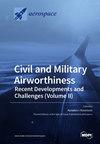基于离散点云重构的波浪机前体/进水口综合融合方法
IF 2.1
3区 工程技术
Q2 ENGINEERING, AEROSPACE
引用次数: 0
摘要
在高马赫数飞行器的开发过程中,摇摆机前体和进气口的综合设计被认为是一项关键挑战。为了便于在概念设计阶段快速构建摇摆机前体和进气口的集成几何模型,提出了一种基于离散点云重建的方法。在这种方法中,摇摆机机身和进气口的几何形状被用作输入,并根据离散规则分解成点云。重新拟合该点云以生成新的截面线,然后在导向曲线的约束下将其跃迁为一个整体形状。通过修改点云位置的坐标,可以快速调整集成形状的几何配置,为后续的空气动力学优化和热保护提供初始支持。利用这种方法,将集成方法应用于串联配置的摇摆机前体和向内翻转的进气口。这实现了机身-进气口的匹配和整合,使进气口的总压力恢复系数提高了 15.6%。整合时间仅为传统手动调整所需时间的 3.18%。此外,基于离散点云的优化将升阻比提高了 7.83%,证明了所提方法的可行性。本文章由计算机程序翻译,如有差异,请以英文原文为准。
Integrated Waverider Forebody/Inlet Fusion Method Based on Discrete Point Cloud Reconstruction
The integrated design of waverider forebodies and inlets is considered a critical challenge in high Mach number vehicle development. To facilitate the rapid construction of integrated geometrical models for waverider forebodies and inlets during the conceptual design phase, a method based on discrete point cloud reconstruction has been proposed. In this method, the geometries of the waverider body and inlet are used as inputs and decomposed into the point cloud under discrete rules. This point cloud is refitted to generate new section lines, which are then lofted into an integrated shape under the constraints of guide curves. By modifying the coordinates of the point cloud positions, the geometric configuration of the integrated shape can be rapidly adjusted, providing initial support for subsequent aerodynamic optimization and thermal protection. Using this method, an integrated approach was applied to a waverider forebody and inward-turning inlet in a tandem configuration. This achieved body-inlet matching and integration, resulting in a 15.6% improvement in the inlet’s total pressure recovery coefficient. The integration time was reduced to just 3.18% of the time required for traditional manual adjustments. Additionally, optimization based on the discrete point cloud enhanced the lift-to-drag ratio by 7.83%, demonstrating the feasibility of the proposed method.
求助全文
通过发布文献求助,成功后即可免费获取论文全文。
去求助
来源期刊

Aerospace
ENGINEERING, AEROSPACE-
CiteScore
3.40
自引率
23.10%
发文量
661
审稿时长
6 weeks
期刊介绍:
Aerospace is a multidisciplinary science inviting submissions on, but not limited to, the following subject areas: aerodynamics computational fluid dynamics fluid-structure interaction flight mechanics plasmas research instrumentation test facilities environment material science structural analysis thermophysics and heat transfer thermal-structure interaction aeroacoustics optics electromagnetism and radar propulsion power generation and conversion fuels and propellants combustion multidisciplinary design optimization software engineering data analysis signal and image processing artificial intelligence aerospace vehicles'' operation, control and maintenance risk and reliability human factors human-automation interaction airline operations and management air traffic management airport design meteorology space exploration multi-physics interaction.
 求助内容:
求助内容: 应助结果提醒方式:
应助结果提醒方式:


